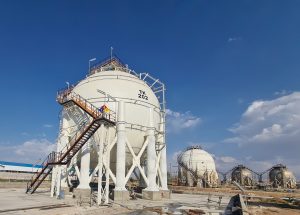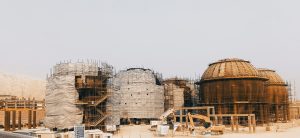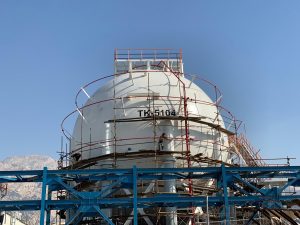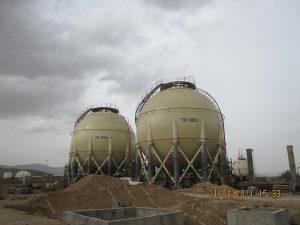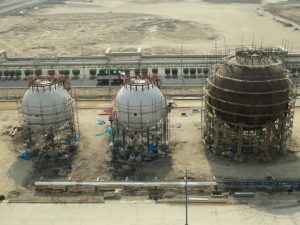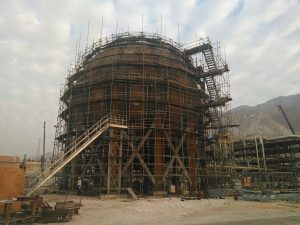Spherical tank under pressure
What is a pressurized spherical tank? These types of tanks are used to store gases in liquid form under pressure. A spherical tank has good strength in its structure; Because the stress distribution is uniform on the inner and outer surface of the sphere.
The stress distribution makes these types of tanks stronger and makes them useful for various applications such as storing liquids and carrying out chemical processes.
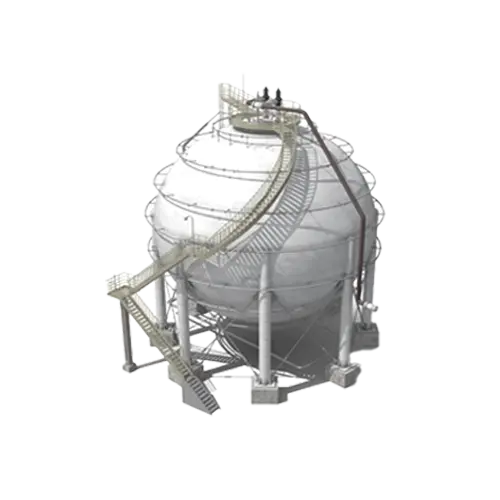
Spherical tank under pressure
Advantages
Due to the reasonable price of atmospheric storage tanks compared to pressure tanks and their efficiency to store fluids for a short or long time, they are an integral part of refineries or factories producing chemical products.
Disadvantages
Two very important points during the operation of this type of tanks are to prevent the excessive increase of pressure inside the atmospheric tanks and also to prevent the excessive decrease of the pressure inside the tanks and to pay attention to the safety requirements.
Design and construction of spherical tanks
The design and construction of atmospheric storage tanks is used to store gaseous materials and liquids that are under normal (atmospheric) atmospheric pressure. These types of tanks are usually used to store gases such as natural gas, hydrogen, oxygen, nitrogen, as well as liquids such as oil and gas. In the design and construction of atmospheric storage tanks, the following points should be considered:
1. Selection of materials: For the construction of atmospheric storage tanks, pressure and temperature resistant steels are usually used. Materials must have sufficient mechanical strength and chemical resistance against stored materials. Also, it is necessary that the materials used have proper anti-rust and anti-corrosion properties.
2. Structural design: The structural design of atmospheric storage tanks must be such as to guarantee internal and external pressure tolerance. This includes choosing the right dimensions for the diameter, wall thickness and overall structure of the tank. Also, the structure must be able to withstand lateral forces such as wind and earthquake.
3, Standards and regulations: The design and construction of atmospheric storage tanks must be compatible with the relevant standards and regulations.
4. Safety: In the design and construction of atmospheric storage tanks, safety is very important. Safety systems such as fire extinguishing systems, cooling systems and pressure relief systems should be considered. Also, safety in the operation of loading, unloading and maintaining the tank must be carefully observed.
6. Periodic maintenance and inspections: Atmospheric storage tanks must be checked and maintained periodically to ensure their health and proper functioning. This includes periodic inspections and repairs, inspection of anti-rust and anti-corrosion layers, inspection of safety systems and monitoring.
Atmospheric storage tanks are used as a sustainable and economical solution for storing gaseous and liquid materials under normal atmospheric pressure. Also, according to the security and environmental needs, the relevant standards and regulations should be adhered to in the design and construction of atmospheric storage tanks and their safety and stability should be ensured.



